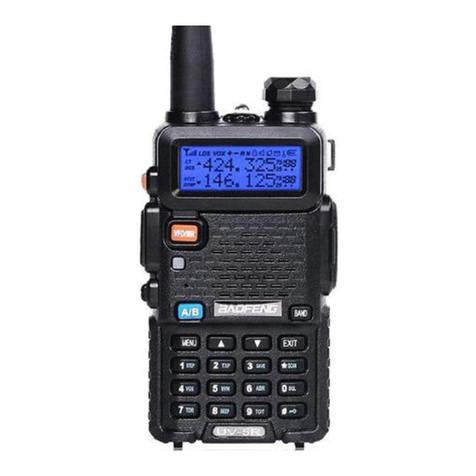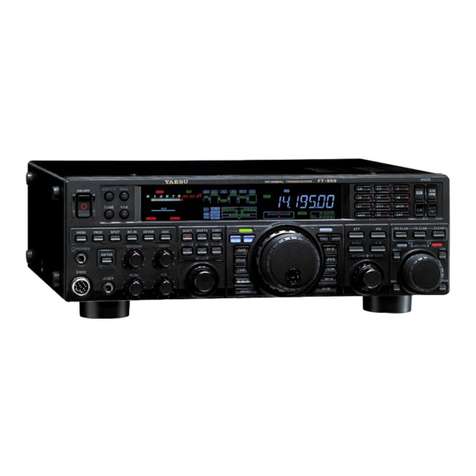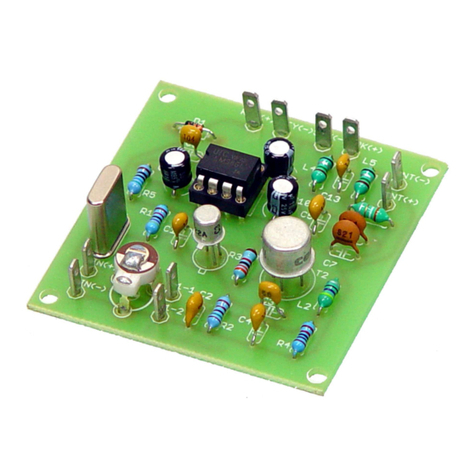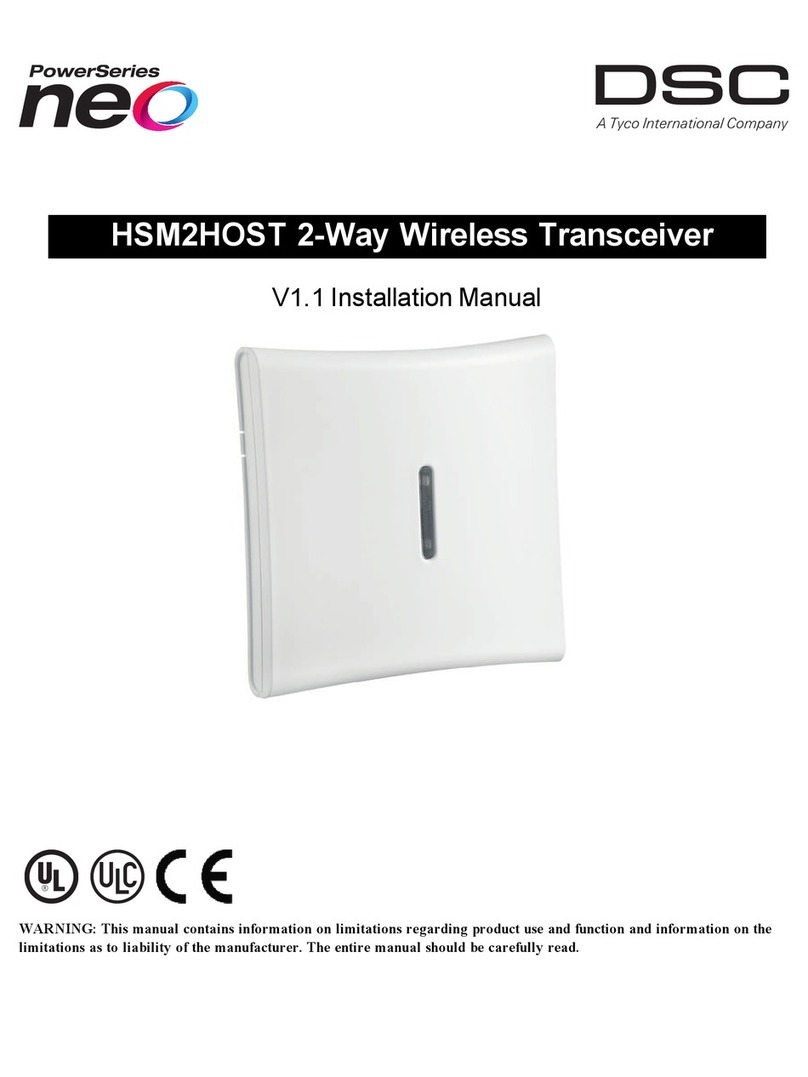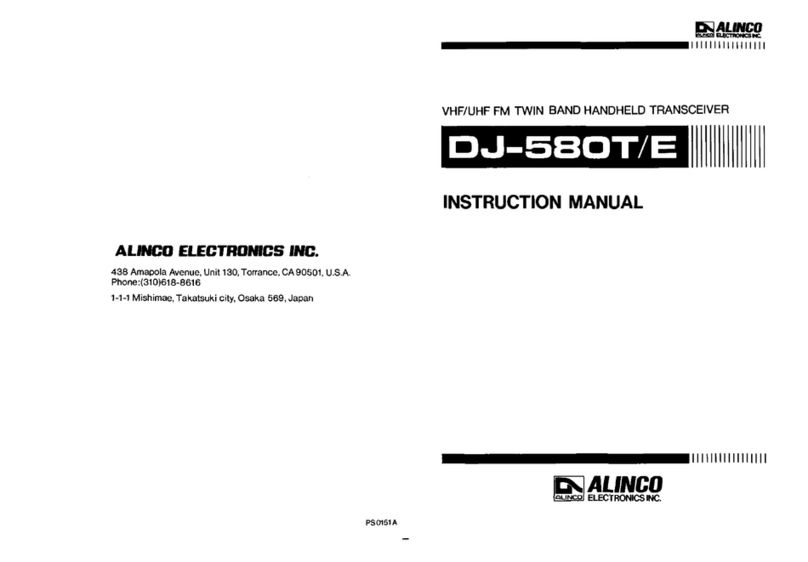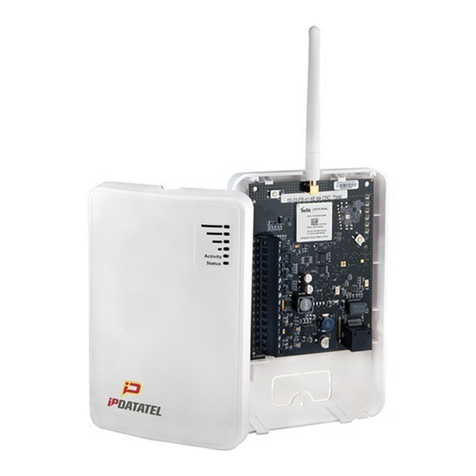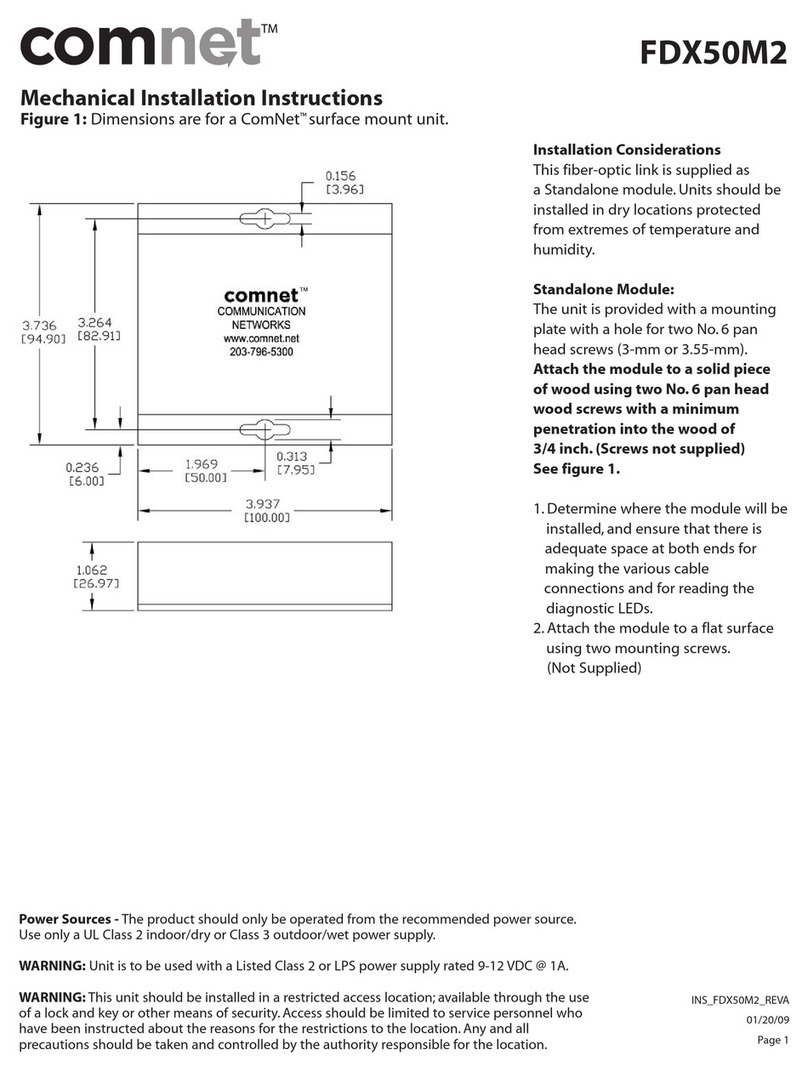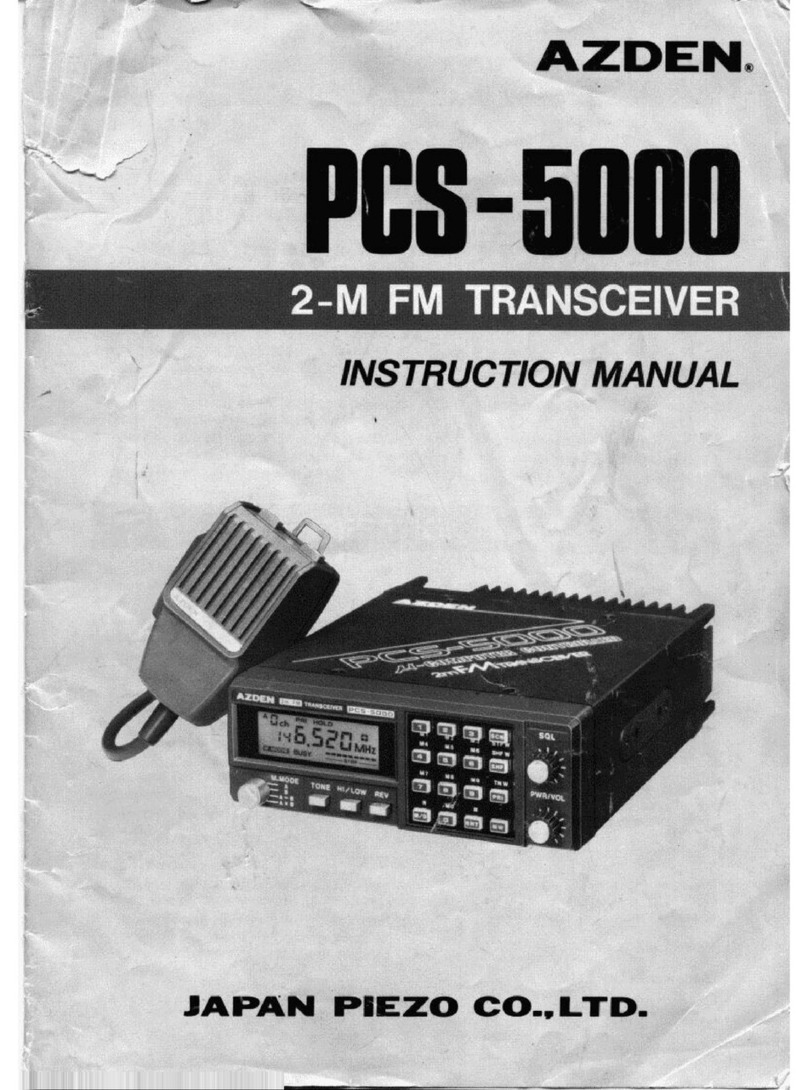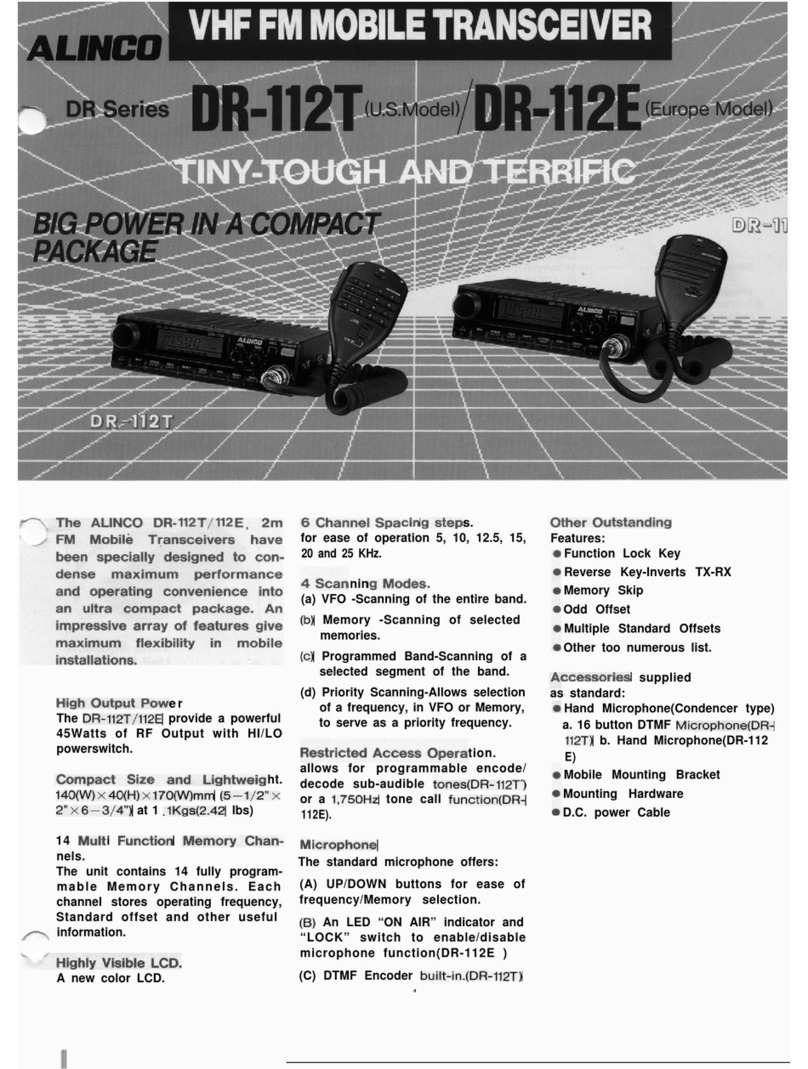bca TRACKER2 User manual

OWNER’S MANUAL
BEDIENUNGSANLEITUNG
MANUEL D’UTILISATION
MANUALE DI ISTRUZIONI
MANUAL DE INSTRUCCIONS
TRACKER2™

Figure A

1
1
2
8
6
Direction Lights
Richtungsanzeige
Affichage de la direction
Spie luminose di direzione
Luces direccionales
Distance Indicator/Battery Power Display
Distanzanzeige/Batterieladeanzeige
Indicateur de distance/Témoin de batterie
Indicatore di distanza/Display del livello batteria
Indicator de distancia/Estado de bateria
Multiple Burial Indicator Light
Mehrfachverschüttetenanzeige
Indicateur multi victimes
Led indicatore di seppellimento multiplo
Luz Indicadora de Entierros Múltiples
Options/SP Button
Optionenschalter/SP
Bouton options/SP
Pulsante opzioni/SP
Boton de opciones/SP
Loudspeaker
Lautsprecher
Haut-parleur
Altoparlante
Altavoz
Battery Door
Batteriefach
Logement des piles
Sportello batterie
Compartmento de bateria
4
9
Transmit Light
Sendekontrolllampe
Témoin d’émission
Spia luminosa di trasmissione
Indicador de transmisión
On/Off Switch
Ein/Aus Schalter
Bouton Marche / Arrêt
Pulsante di accensione
Interruptor
Search/Transmit Tab
Sende-/Suchschalter
Sélecteur mode recherche/émission
Pulsante ricerca/trasmissione
Boton de busqueda/transmisión
3
7
5

2
Disclaimer:
No avalanche beacon can save lives without a fully trained
user. Practice frequently with your Tracker before going into
the backcountry. Learn and understand the inherent dangers
of backcountry travel. Become educated in avalanche hazard
evaluation, route selection, and self-rescue. In addition to your
beacon, always carry a probe and shovel—and always travel with a
partner. We also recommend the use of avalanche airbags.
Make sure all rescue equipment is functioning properly before
venturing into the backcountry. Perform a beacon trailhead test
every time you use your Tracker. Check that all transceivers transmit
and receive properly—and that all receive a signal at a minimum
distance of ten meters, the international standard for effective range.
Do not place cellular phones, communication radios, or any other
electronic equipment within 12" (30 cm) of the Tracker2 while
performing a transceiver search. In receive mode, irregular readings,
decreased range and multiple burial indications can be caused by
these and other sources of electrical interference, such as power
lines, electrical storms, and electrical generating equipment. In
transmit mode, keep the Tracker2 at least 1" (2.5cm) from other
electronic equipment. Use only alkaline batteries of identical age
and brand. Do not use rechargeable, lithium, Oxyride, PowerPix, or
any other non-alkaline battery.
This owner’s manual covers the basic techniques required
to use the Tracker2 effectively. To increase your efficiency, order our
training DVD's and refer to the advanced techniques described on
our website: www.backcountryaccess.com. Here you will also find
important resources for obtaining avalanche education and updates
on regional avalanche conditions.
To ensure warranty protection and to be notified of periodic software
updates, please complete an online warranty registration at
www.backcountryaccess.com/warranty.
Conforms to the R&TTE harmonized version of the EN 300 718 and
meets or exceeds the requirements of Articles 3.1, 3.2, and 3.3.

ENGLISH
3
Avalanche Awareness
This is a basic introduction to avalanche safety and awareness.
We encourage you to read this manual thoroughly. On our website,
you will also find a list of avalanche instructors. We strongly suggest
taking an avalanche course in your area before venturing into the
backcountry.
Before leaving, call your local avalanche forecast center and
determine the danger level in the area you intend to visit.
U.S. www.avalanche.org
Canada www.avalanche.ca
Europe www.lawinen.org
At the trailhead, check that each person has a working beacon probe
and shovel—and knows how to use them. We also recommend the
use of avalanche airbags.
Learn to recognize avalanche terrain:
• Does this slope have a history of sliding?
•What is the angle and aspect of the slope?
•Will recent weather impact snow stability?
Learn to avoid avalanche terrain:
•Is there any evidence of recent avalanche activity?
•Is the slope angle between 30 and 45 degrees?
•Does the slope you plan to use have dangerous terrain traps
(rocks, trees, gullies, cliffs, etc.)?
N
S
E
W
Low
Moderate
Considerable
High
Extreme
Pockets of next danger level

4
Avalanche Awareness
Travel with considerate partners:
•Cross potentially dangerous terrain one at a time.
•Identify and practice stopping in safe zones.
•Have an escape route in mind if the slope does avalanche.
•Communicate with your partners before moving on to the slope.
When traveling in a group, be aware of the errors
groups typically make:
•Recreating at an area that’s been visited without incident before
and feeling confident in its stability.
•Not speaking out or communicating concerns about a path
or slope, fearing conflict.
•Being overconfident in the groups’ abilities.
•Determination to reach a destination without re-evaluating terrain
and conditions.
If in doubt, it is always best to avoid questionable terrain and
return when the snow is stable.
If you are caught in an avalanche:
•Yell “avalanche” and wave your arms to alert your group.
•Deploy your avalanche airbag if you have one.
•Try to escape the slide by grabbing trees or rocks or ‘swimming’
to the side.
•Try to keep your airway clear of snow.
•When you feel the slide slowing, thrust a hand upward in hopes
of it being seen.
•Place your other hand in front of your face to increase the
air space.
•Remain calm, breathe slowly and conserve your air.
Searching for victims:
•Do not go for help! You are the victim’s only chance of survival!
•Establish a last seen point.
•Confirm you are not in danger of a second avalanche occurring.
•Look for visual clues to the victim’s location.
•Begin your signal search for the victim using your avalanche
beacon.

ENGLISH
5
Quick Reference
This quick reference page is an introduction to proper use of the
Tracker2. For more detailed information, read the entire manual and
consult our website: www.backcountryaccess.com.
Basic functions
On/off: Turn the on/off switch on the back of the Tracker to the “on”
position. The battery life is displayed in the distance/battery power
display. Change batteries well before they reach 20 percent.
Search mode: Pull down the search tab at the bottom of the unit.
In search mode, the display will show “SE” and “SEARCH” is exposed
underneath the tab. Unit must be in transmit mode to turn it off.
Return to transmit: Push the search tab in toward the body of the
beacon until it clicks into place. The display will flash “tr” and beep
for five seconds before it begins to transmit.
Searching with the Tracker2
The objective is to find the strongest signal (lowest distance reading)
and immediately begin probing the area.
In the event of a burial, switch your Tracker (and all other beacons)
to search mode. "SE" will flash in the distance window until a signal
is captured.
Signal search: If there is a "last seen point," start your signal
search there, and search downhill. Otherwise, start your signal
search at the top, bottom or side of the slide path. Allow a maximum
of 40 meters between searchers or between switchbacks if only one
searcher. Slowly rotate your Tracker back and forth until you engage
the signal.
Coarse search: Once a signal is engaged, align the Tracker so
that any of the center three lights are flashing and move quickly in
the direction the Tracker is pointing. Your direction of travel might
be straight or slightly curved. Make sure the number in the distance
display is decreasing. If it is increasing, turn 180 degrees. Inside
ten meters, move slowly and try to keep the center search light
engaged.
Fine search: Within three meters, use your beacon close to the
snow surface and look for the smallest distance reading. Ignore
sudden fluctuations in distance and direction; the strongest signal is
often just past these fluctuation points. Begin probing at the smallest
reading (strongest signal).

6
20m
20m
20m
avalanche path
40m
Objective: Locate signal
•Ifno"lastseenpoint,"searchentirepath
•RotateTrackerhorizontally
•Max40mbetweensearchersorswitchbacks
Objective: Locate smallest distance reading
(strongest signal)
•UseTrackerclosetosnowsurface
•Ignorefluctuationsindistanceanddirection
•Beginprobingatlowestdistance
•Probeinconcentriccircles10in(25cm)apart
Objective: Move quickly to 10m,
slowly to 3m
•Keepflashinglightwithincenter3windows
•MovequicklyindirectionTrackerispointing
•Makesuredistanceisdecreasing
•Slowdownat10m
SIGNAL
SEARCH
>40m
FINE
SEARCH
< 3m
Quick Reference
COARSE
SEARCH
3–40m
Probing/Pinpointing
At your lowest distance reading, probe in concentric circles, with each
probe hole about 10 inches (25 cm) apart. Your probe should enter the
snow perpendicular to the slope. Once you have confirmed the victim’s
location, leave the probe in the snow.
Shoveling
Shoveling is difficult and exhausting and consumes the majority of
time during an avalanche rescue. For best results, start shoveling
just downhill of the probe. In burials deeper than 1 meter,
excavate downhill about 1.5 times the burial depth, at least one
“wingspan” wide.
Multiple Burials
Complex multiple burials are quite rare in recreational settings
and usually can be treated as a series of single burials. For more
information on multiple burial search techniques, see page 12.

ENGLISH
7
Thank you for choosing the Tracker2, the world’s fastest three-
antenna beacon.
Remember, beacon searches are only part of the avalanche rescue
process. It is equally important to practice the probing and shoveling
techniques found later in this section.
Basic functions
On/off: Turn the on/off switch uon the back of the Tracker to the
“on” position (see Figure A). The battery life is displayed in the
distance/battery power display v.
After displaying battery power, the beacon flashes “tr” and enters
transmit mode. The transmit light wflashes with every other
transmit pulse. This light will not flash if the battery power is below
20 percent.
Note: that the battery percentage is approximate. The manufacturer
suggests replacing batteries xwell before reaching 20 percent.
Search mode: Pull down the search tab yat the bottom of the
unit. In search mode, the display will show “SE” and “SEARCH” is
exposed underneath the tab.
The beacon cannot be turned off in search mode. Always return to
transmit mode to turn off your unit.
Return to transmit: Push the search tab in toward the body of the
beacon until it clicks into place. The display will flash “tr” and beep
for five seconds before it begins to transmit.
After 30 minutes in search mode, the beacon will beep every ten
minutes. After 12 hours in transmit mode, the beacon will beep
every two minutes. These beeps are reminders that there has been
no user input and the beacon is still on.
Adjustment/Fitting
The Tracker2can be worn with or without its harness.
The manufacturer recommends securing it with the harness.
When used with a harness, the Tracker2should be worn
underneath your outer garments, as shown in Figure B. Distance/
directional display should be against your body, on/off switch should
be exposed and visible.
Familiarization

8
To search, remove Tracker from pouch, but keep harness and
lanyard attached to your body. If using without harness, keep
Tracker in a secure pocket, preferably in your pants or other garment
that won’t be removed while traveling in the backcountry. Attach
lanyard clip to zipper or other solid fixture. If lanyard is removed from
harness or clothing for searching, keep attached to your wrist with
loop provided.
Power Supply
The Tracker2 operates with three AAA alkaline batteries. Use only
high-quality alkaline batteries of identical age and brand. Do not use
rechargeable, lithium, Oxyride, PowerPix or any other non-alkaline
battery. Replace with fresh batteries at the beginning of every
season.
In addition to being displayed at startup, the battery power level can
also be checked in transmit mode by pressing the options/SP button
z.
If the Tracker is subjected to excessive moisture, open the battery
door xto help allow the unit to dry. To prevent corrosion of
contacts, remove batteries during extended periods of inactivity.
The manufacturer does not warranty damage caused by battery
corrosion.
OPERATING INSTRUCTIONS
Searching
The Tracker2 operates using the 457 kHz international standard
frequency. It is fully compatible with all avalanche transceivers
adhering to this standard. Do not use with 457kHz transceivers
designed for firefighter rescue.
When searching, keep the Tracker2 at least 12” (30cm) away
from electrical equipment, including cell phones. Turn all electrical
equipment off if possible.
Familiarization
Operating Instructions
Shoulder Strap
Waist Attachment Buckle
Waist Strap Lanyard
Figure B

ENGLISH
9
The search process includes four phases: the signal search, the
coarse search, the fine search, and the probing/pinpointing phase.
Signal Search: The signal search refers to the process of
establishing a search pattern and looking for a signal. The search
pattern will be defined by the victim’s last seen area, the size of the
slide, and the number of searchers. Refer to Figure C to establish
a signal search pattern. If the slide is less than 40 meters wide,
the signal search path will be directly up or down the center. If the
victim’s last seen area is well defined, the signal search will follow a
direct path along the fall line (up or down) from this point.
If the slide is wider than 40 meters and there is no last seen point,
cover the entire slide area by using switchbacks in the search pattern
(Figure C). If multiple rescuers are available, establish a search
pattern where the space between searchers is no more than 40
meters and the distance to the edges is no more than 20 meters.
Operating Instructions
20m20m
avalanche path
40m40m
Figure C
20m
20m
20m
20m
avalanche path
40m
40m
last seen area
last seen area
Signal search path with one searcher
(slide wider than 40 meters).
Signal search path with multiple searchers
(slide wider than 40 meters).

10
Prior to the signal search, be sure that all transceivers are turned
to search mode. Rotate the Tracker slowly in all directions (Figure
D) while moving along your signal search pattern. While searching,
be aware of other physical clues, such as equipment or extremities
protruding from the snow surface. When no signal is detected,
“SE” will flash in the distance indicator. Once a signal is detected
consistently, mark this spot and begin the coarse search.
Coarse Search: The coarse search is the portion of the search from
where you have detected a steady signal to where you are close to
the victim.
Once the signal is consistently detected, rotate the Tracker slowly
on a horizontal plane until the center direction light {is blinking.
The Tracker is now pointed in the direction of the strongest signal.
The four lights on either side of center tell you which way to rotate the
Tracker to engage the center light. The distance indicator vtells you,
in approximate meters, how far you must travel (1 meter = 1.1 yards
or 3.3 feet). If the number on the distance indicator is increasing,
you are on the same axis as the victim’s signal, but moving in the
opposite direction. Turn 180 degrees, engage the center search
light again, and continue your search in the direction the Tracker
is pointing. If you are stationary, but the distance is significantly
changing, you are probably detecting the signal of another rescuer.
Make sure all rescuers are in search mode before continuing.
You may find that, while following the directional lights, your route
follows an arc. This is because the Tracker2 follows the shape of
the electromagnetic signal coming from the transmitting beacon’s
antenna. The distance displayed is the distance to be traveled along
that signal, not the straight-line distance from you to the victim.
Fine Search: The fine search is the final part of the beacon search,
which is performed on foot with the beacon positioned at or near the
snow surface. The objective of the fine search is to locate where the
Operating Instructions
Slowly rotate the Tracker horizontally
and vertically in your hand, but move
rapidly during the signal search. Do
not abandon your search path until
you have captured a strong, steady
signal. Ignore irregular signals,
which can sometimes be caused by
electrical interference.
Figure D

ENGLISH
11
signal is strongest (distance reading is lowest) and to reduce the area
to be probed.
Move your beacon slowly in a straight line along the surface of the
snow during the final three meters of the fine search. The directional
lights do not illuminate in the final two meters, so only pay attention
to the distance readings. From the point where you have located the
smallest reading, “bracket” at 90-degree angles to the left and then to
the right in search of a lower reading (Figure E). Repeat if necessary
along both axes. Begin probing at the lowest distance reading.
Probing/Pinpointing
At your lowest distance reading, probe in concentric circles, with each
probe hole about 10 inches (25 cm) apart (Figure F). Your probe should
enter the snow perpendicular to the slope. Once you have confirmed
the victim’s location, leave the probe in the snow.
Operating Instructions
3.0
2.0
1.0
2.0
3.0
1.6 1.6
Bracketing: Make sure you go well past
the low reading to confirm it is the lowest.
When bracketing, ignore the directional
lights, which no longer illuminate at less
than two meters. Do not rotate the beacon
during this process, as it can change the
distance readings.
Figure E
˚˝˝
CM CM
Figure F

12
Shoveling
Shoveling is difficult and consumes the majority of time during an
avalanche rescue. Do not take shoveling skills for granted. For best
results, start shoveling just downhill of the probe (Figure G). Make
your hole is at least one “wingspan” wide. In burials deeper than one
meter, excavate downhill about 1.5 times the burial depth (this can be
determined by noting the depth marking on the probe).
Multiple Burials
Complex multiple burials are quite rare in recreational settings and
usually can be treated as a series of single burials. When more
than one transmitting victim is within the receive range of Tracker2,
the multiple burial light |will illuminate and stay solid. (Note:
this light can occasionally illuminate irregularly in the presence of
electromagnetic noise or when detecting older analog transceivers).
If the multiple burial light is illuminated and/or the Tracker2 displays
more than one distance and direction, then you probably have
several victims within your receive range. Stay in search (SE) mode,
and focus on the closest distance reading, attempting to engage that
signal in the center search light.
Once you are significantly closer to one signal than the other (in SE
mode), Tracker2 will “lock” onto that signal and mask out the others.
Once this signal is isolated, the Tracker will behave very similar to
how it does in a single beacon search. Once you have located the
first beacon, turn it off if you determine the conditions are safe. If you
have a clear signal, then begin the search here for the next victim.
If the multiple burial light is flashing consistently on and off, then there
are at least two victims in close proximity (within five meters of the
searcher). This may require a special technique.
1.5 x
burial depth
Figure G
Operating Instructions

ENGLISH
13
Special techniques should be considered if there are several rescuers
available, the victims are in very close proximity, and their beacons
cannot be turned off. For a summary of these special techniques, see
page 14.
Advanced Options
Auto-Revert System: if engaged by the user, the auto-revert feature
automatically returns the Tracker2 to transmit mode after five minutes
in search mode. At startup, the user can engage the Tracker’s auto-
revert feature by pressing and holding the options/SP button zwhile
turning the beacon on. Continue to depress the SP button until the
display window shows “Ar.” Once auto-revert is engaged, auto-revert
remains activated as long as the beacon is on.
If auto-revert is engaged, then after four minutes and 30 seconds in
search mode, an alarm will sound for 30 seconds and “Ar” will flash
repeatedly in the distance indicator. To remain in search mode, briefly
press the options/SP button or toggle the search tab in and back out
at any time during the 30-second alarm period. If 30 seconds elapse,
“tr” will flash once and the Tracker will begin transmitting. In auto-
revert mode, as long as the search tab is pulled out, the beeping will
continue to alert the user that the beacon is transmitting.
If auto-revert is not engaged, the Tracker will sound a short alarm
every ten minutes to remind the user that he or she is in search
mode. After 30 minutes in search, the beacon will beep every ten
minutes.
Mute Mode: To mute the sound, begin in transmit (“tr”) mode, push
and hold the options/SP button z, then pull the search tab on, wait
until “L0” is displayed, then release the options/SP button. To turn
the loudspeaker }back on, simply push the search tab back into
transmit. The next time you return to search (“SE”) mode, the sound
will be on. Mute mode will not deactivate the beeps emitted when the
beacon is about to begin transmitting a signal.
Special Mode: Special (SP) mode is an advanced feature designed
to assist expert searchers in specialized multiple burial situations.
These situations are typically only found in guided groups where
victims are in close proximity and one or more rescuers can start
shoveling while a professional guide resumes the transceiver search.
SP mode can provide that searcher with a distance and direction to
the next victim.
Special mode can only be entered while the user is in search mode.
To enter SP mode, press the options/SP button z. For further
instructions, see the next page.
Operating Instructions

14
In most cases, multiple burials are approached as a series of single
burials. However, special techniques might be helpful if the victims’
beacons cannot be turned off and there are several rescuers
available (so some can start shoveling while the best beacon user
continues searching). These techniques are only necessary for
close-proximity situations, where two or more victims are suspected
to be very close to each other. If the victims are located less than
about five meters from each other, then it is possible to move past
a signal without it being detected. If the victims are suspected to
be further apart than this, then it is quite simple to continue on your
signal search until the second victim’s signal is captured and isolated
by your Tracker. In the case of suspected close-proximity multiple
burials (with more than one rescuer available), we suggest the
following special techniques:
Three-Circle Method: This technique involves remaining in SE
mode and making concentric circles around the location of the first
victim until another signal is detected. It is most effective in large
deposition areas and low-angle terrain.
Micro-Search Strip Method: This technique is more useful in
smaller debris areas, like those often encountered in guiding exams.
The user remains in SE mode and crisscrosses the debris pile in
strips three to five meters apart until the next signal is detected.
For detailed instructions on using the special techniques above, see
our Advanced Tracker Manuals at www.backcountryaccess.com.
Special Mode: For greatest efficiency in “special case” close-
proximity multiple burials, use special (SP) mode. This mode enables
the Tracker to display the distance and direction of signals other
than those of the closest beacon (Figures I, J). It also reduces the
Tracker’s search “window” to the center three directional lights,
enabling the searcher to mask out beacon 1 and differentiate it
from beacon 2. SP mode is used to determine approximately what
direction and distance to go to get closer to beacon 2. Once you are
closer, always switch back to SE mode.
To use SP mode, hold the Tracker steady at the lowest possible
distance reading. Switch the Tracker to SP mode, then rotate—do
not sweep—the Tracker gradually until another signal is detected
(beacon 2), most likely with a larger distance reading. If the Tracker
is rotated more than about 40 degrees away from the signal of
beacon 1, that signal will disappear, allowing you to focus on the signal
from beacon 2. However, it is possible to capture more than one signal
in SP mode.
Special Search Techniques

ENGLISH
15
If no other signal is captured in SP mode and you suspect victims are
nearby, stand up and try again at chest height. If still no other signal is
detected, take three steps back and repeat (or revert to SE mode and
use the three-circle method).
Once you have located another signal in SP mode, begin to move in
that direction. If the distance consistently decreases, you are going
in the right direction. Travel far enough in SP mode to confirm the
distance is decreasing and which way the signal is trending. If more
than one signal is being displayed and it becomes unclear which one
to pursue, continue in the direction you have been searching. Always
switch back to SE mode when you think you are getting closer to
beacon 2 than beacon 1.
After finding a victim, if no further signals are detected in SP mode,
then continue the search if there are still missing victims. Revert
to search mode and perform a signal search of the remaining
unchecked areas within the debris pile. Resume your signal search at
the point where it was originally abandoned.
For more details on multiple burials, please refer to our website:
www.backcountryaccess.com.
2
In special mode (SP), all signals
are shown, but Tracker2 acts as
a “spotlight” with narrowed vision:
approximately 75 degrees in front
and in back of the searching beacon.
Only the signals within this angle
(beacon 2) are shown. This 75°angle
corresponds to the Tracker’s center
three lights.
Always switch back to search mode
(SE) when you’re more than halfway
from beacon 1 to beacon 2.
Figure J
In search mode (SE), only the
strongest signal (beacon 1) is
shown. Signals further away
are received (beacon 2), but
not shown in the distance and
direction display.
Figure I
2
Special Search Techniques

80
Declaration of Conformity
according to ISO/IEC Guide 22 and EN 45014
Manufacturer:
Backcountry Access, Inc.
2820 Wilderness Place, Unit H
Boulder, CO 80301
USA
Declares that the product:
Tracker 2
457 kHz Avalanche Rescue Transceiver
meets or exceeds all essential requirements and other relevant
provisions of the R&TTE Directive 1999/5/EC, including Articles
3.1a, 3.1b, 3.2, and 3.3e and the harmonized standards:
EN 300 718-1
EN 300 718-2
EN 300 718-3
Bruce McGowan
President, Backcountry Access, Inc.

APPENDIX
81
Technical Specications
• Frequency:457kHz
• Batteries:ThreeAAA/LR03alkalinebatteries.Donotuserechargeable,
lithium, Oxyride, PowerPix or any other non-alkaline battery.
• Batterylife:minimum1hourinsearchmodeafter200hoursintransmitmode
(approximately 250 hours in transmit only or 50 hours in search only)
• Searchstripwidth:50meters
• Weight:6.4ounces(181grams)withoutstrapandbatteries
• Size:5.2”x3.4”x1”(13.2cmx7.6cmx2.5cm)
• Minimumtemperaturerange(at66.7percentbatterypower):
transmitmode:-10°Cto+40°C(14°Fto104°F);
searchmode:-20°Cto+40°C(-4°Fto104°F)
• U.S.Patentnumber6,167,249&6,484,021B1
FCC ID: OUNT2
Model No.: Tracker2
IC: 3561A-T2
This device complies with part 15 of the FCC Rules.
Operation is subject to the following two conditions:
1. This device may not cause harmful interference, and
2. This device must accept any interference received, including interference
that may cause undesired operation.
Note: This equipment has been tested and found to comply with the limits
for a Class B digital device, pursuant to part 15 of the FCC Rules. These limits
are designed to provide reasonable protection against harmful interference
in a residential installation. This equipment generates, uses and can radiate
radio frequency energy and, if not installed and used in accordance with
the instructions, may cause harmful interference to radio communications.
However, there is no guarantee that interference will not occur in a particular
installation. If this equipment does cause harmful interference to radio or
television reception, which can be determined by turning the equipment off and
on, the user is encouraged to try to correct the interference by one or more of
the following measures:
• Reorientorrelocatethereceivingantenna.
• Increasetheseparationbetweentheequipmentandreceiver.
• Connecttheequipmentintoanoutletonacircuitdifferentfromthattowhich
the receiver is connected.
• Consultthedealeroranexperiencedradio/TVtechnicianforhelp.
Caution: Any changes or modifications not expressly approved by the party
responsible for compliance could void the user’s authority to operate this device.

82
TECHNISCHE DATEN
• Frequenz:457kHz
• Batterien:DreiAAA/LR03Alkalibatterien.VerwendenSiekeine
wiederaufladbaren, Lithium, Oxyride, PowerPix oder andere nicht
alkalische Batterien.
• Batterielebensdauer:mindestenseineStundeimSuchmodusnach
200 Stunden im Sendemodus (250 Stunden im reinen Sendemodus oder
50 Stunden im reinen Suchmodus)
• Suchstreifenbreite:50Meter
• Gewicht:181Gramm(ohneTragegurtundBatterien)
• Abmessungen:13,2cmx7,6cmx2,5cm
• Mindesttemperaturbereich(bei66,7ProzentBatteriekapazität).
Sendemodus:-10°Cbis40°C
Suchmodus:-20°Cbis40°C
• U.S.PatentNummer6,16,249&6,484,021B1
FCC ID OUNT2
Modellnummer: Tracker2
IC: 3561A-T2
DiesesGerätentsprichtdemTeil15derFFCVorgaben.
Der Betrieb ist an folgende Voraussetzungen gebunden:
1.DiesesGerätdarfkeineschädlicheInterferenzerzeugen,und
2.DiesesGerätmussempfangenenInterferenzenstandhalten,
inklusiveInterferenzen,welchenichtgewünschteReaktionenerzeugen
Hinweis:DiesesGerätwurdeüberprüft,sodassesmitdenVorgabender
KlasseBvondigitalenGerätenbezüglichderFCC,Teil15,übereinstimmt.
DieVorgabensindsoausgelegt,dassvorschädigendenInterferenzenbei
öffentlichenInstallationeninvernünftigemUmfanggeschütztwird.Dieses
Gerätgeneriert,nutztundemittiertEnergiedurchRadiowellen,welche
störendaufRadiokommunikationwirkenkönnen,fallsesnichtanalogder
Bedieninstruktionen installiert und betrieben wird. Allerdings kann nicht
garantiertwerden,dasssichkeineStörungeninspeziellenSituationenergeben.
FallsdasGerätdenRadio-oderTelevisionsempfangstört,kanndieStörung
dadurchbeseitigtwerden,dassdasGerätanundwiederausgeschaltenwird.
Der Anwender wird aufgefordert die Interferenz durch eine oder mehrere der
folgendenMaßnahmenzuvermeiden:
• ÄnderungderAntennenausrichtungoderderAntennenplatzierung
• VergrößerungdesAbstandszwischendemGerätunddemEmpfänger
• AnschließendesGerätesaneineSpannungsversorgung,anwelche
derEmpfängernichtangeschlossenist
• HinzuziehendesHändlersodereinesRadio/TVTechnikers
Warnung:JedwedeÄnderungoderModifikation,welchenichtausdrücklichvom
HerstellerundVertreibergeprüftwurde,führtzumVerlustderBetriebserlaubnis.
Technical Specications
Other manuals for TRACKER2
3
Table of contents
Other bca Transceiver manuals
Popular Transceiver manuals by other brands

MFJ
MFJ MFJ-9030 installation manual
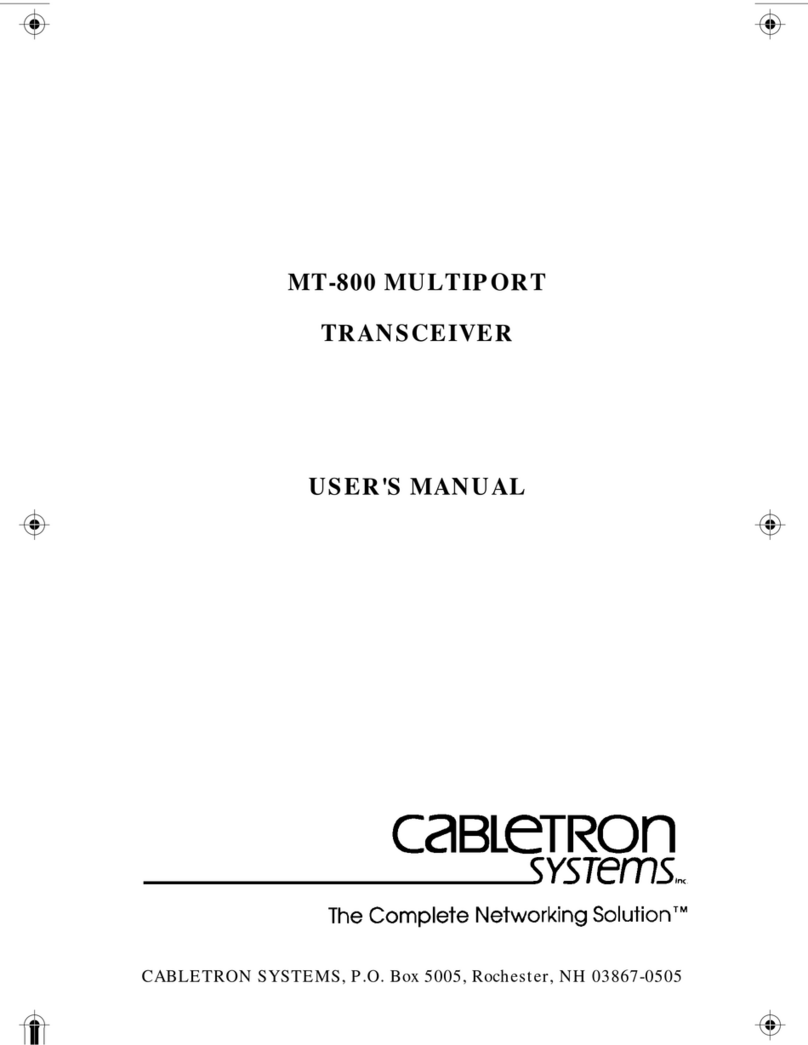
Cabletron Systems
Cabletron Systems MT-800 user manual
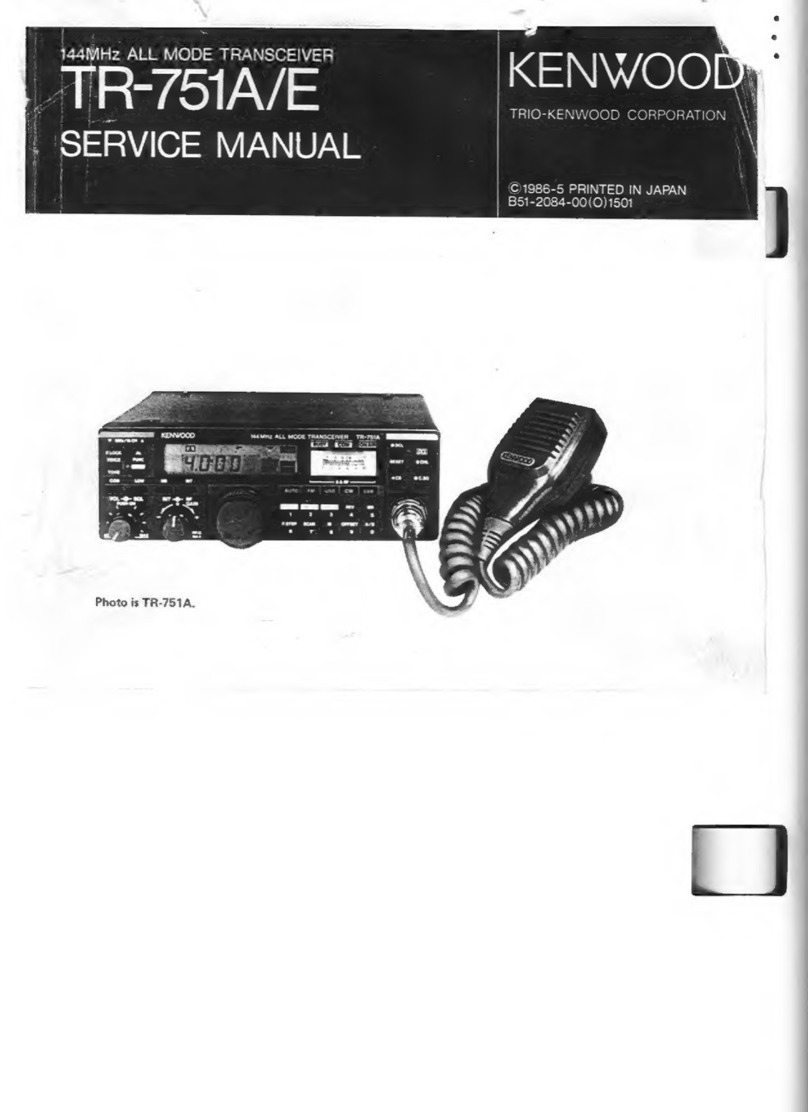
Kenwood
Kenwood TR-751A Service manual
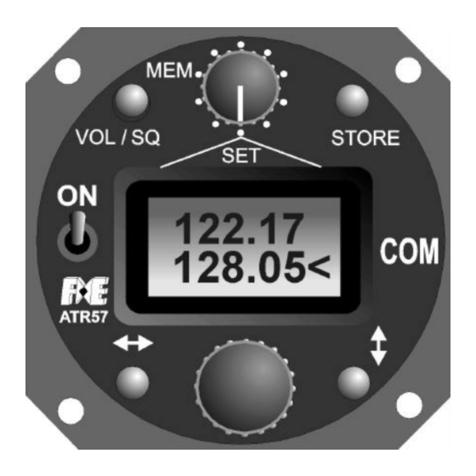
Filser Electronic
Filser Electronic ATR 57 COM Installation and user manual
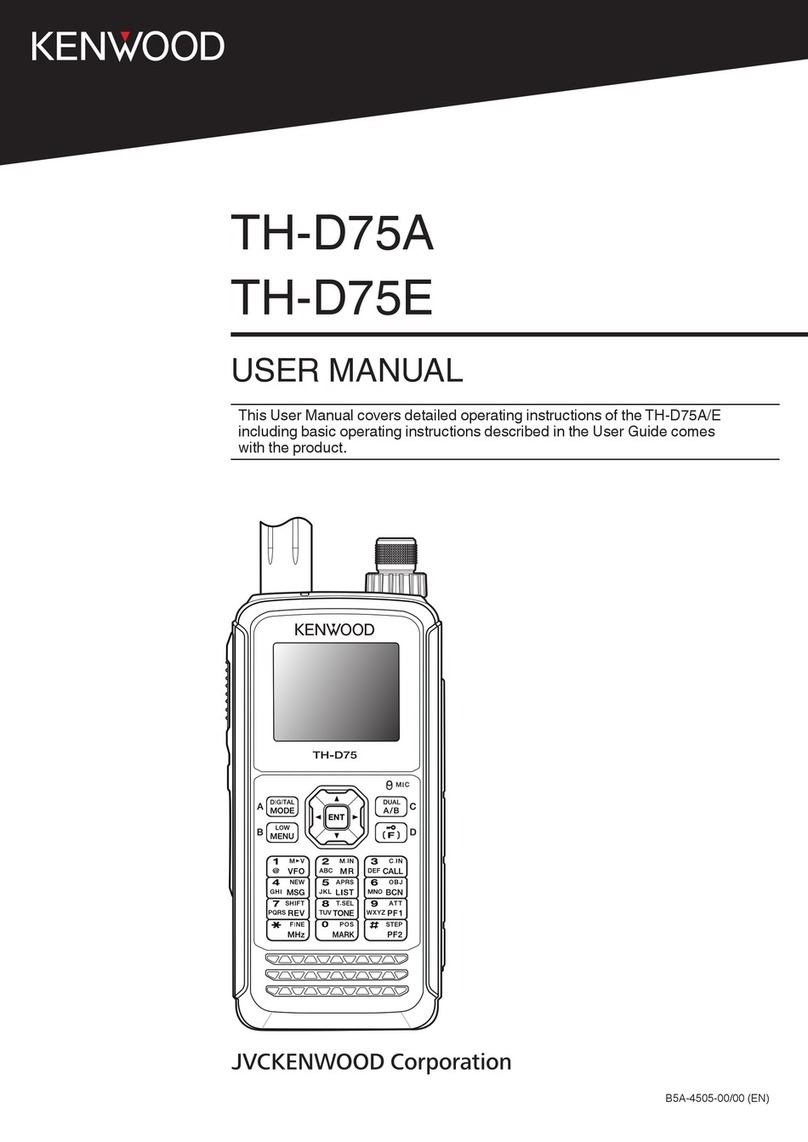
Kenwood
Kenwood TH-D75E user manual
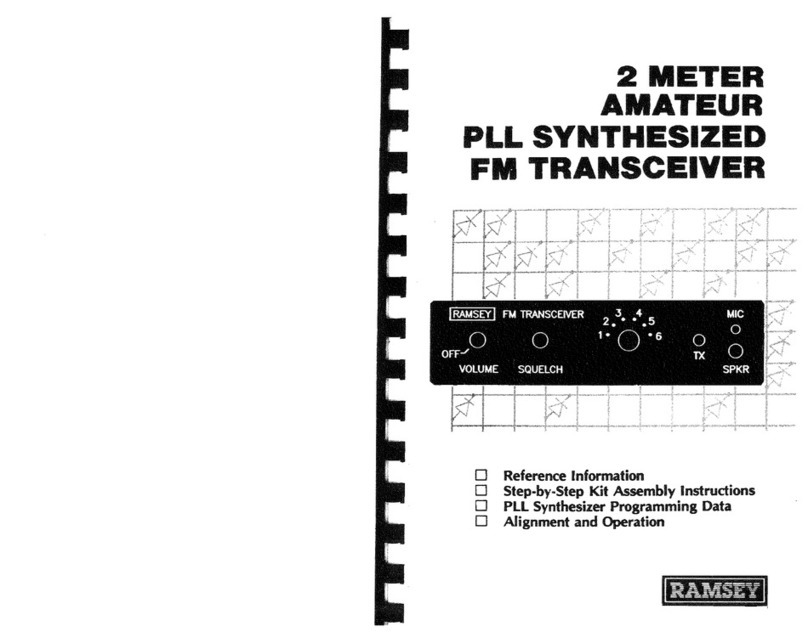
Ramsey Electronics
Ramsey Electronics FTR-146 Kit assembly and instruction manual
